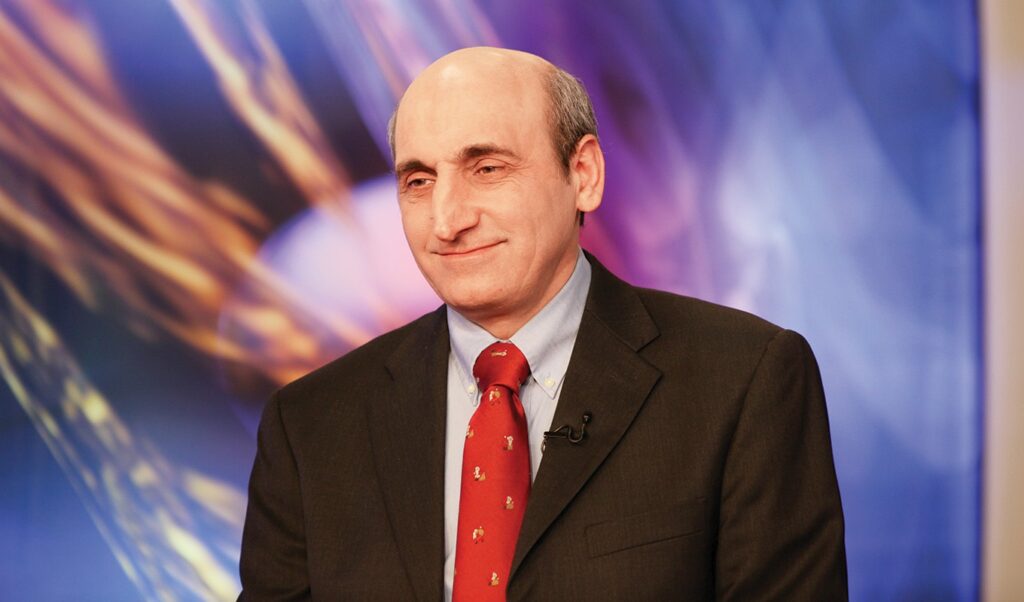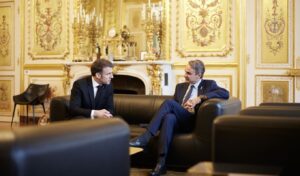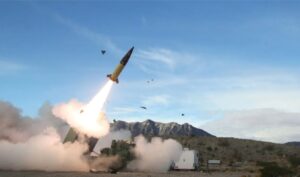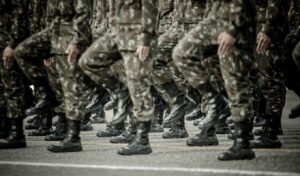As the head of the snake of international terrorism and extremist organizations worldwide, Tehran is characterized in “PARAPOLITIKA” by Sahin Gobadi, a self-exiled nuclear engineer in Paris and member of the Foreign Affairs Committee of the National Council of Resistance of Iran. US attacks on nuclear facilities will bring no change to the regime’s nuclear program, which constitutes a strategic guarantor for its survival, Gobadi emphasizes. Only the Iranian people have the right to overthrow the regime, not foreign powers, the Foreign Affairs Committee member of Iran’s National Council of Resistance further notes.
Do you see signs indicating a possible replacement or reform within the Iranian regime?
Reform is completely inconceivable in this regime. This is the illusion that Europeans and Americans have, who have been trying for more than three decades to find some moderates within this regime. They tried to approach them, but it proved to be a mirage, because there were never any moderates. In domestic repression, in exporting extremism, in supporting terrorist groups, in financing them, in arming them, in creating chaos in the region, in acquiring nuclear weapons and ballistic missiles, there is absolute unanimity in this regime. It’s in their DNA. The regime used the deception of hardline reformers, a narrative it created, to secure concessions from the West. The moment this regime starts to reform, it will collapse. Any change on the horizon will come from bottom to top, in the form of people’s uprising in the streets. There have been five major nationwide uprisings in the country since December 2017. It’s clear that people will not settle for anything less than getting rid of this regime. In the people’s slogans, not only do they refer to Khamenei’s person – the supreme leader – targeting the entire regime, but they also chant slogans like “Down with the oppressor,” whether it’s the shah or the supreme leader. They don’t want to return to the previous monarchy and obviously want to get rid of today’s theocracy. Iran’s future must be a Democracy. This will be the ultimate solution to the Iranian crisis.
None of the uprisings you mentioned seems to have managed to overthrow the regime so far. Do you believe this will change after the American bombings and Israeli attacks?
There has been very harsh repression. Despite the fact that the regime murdered 750 protesters and arrested 90,000 more, people haven’t stopped. There are indications that a new uprising is forming on the horizon. During the last 40-plus years, 120,000 Iranians, men and women, some of whom were only 13 years old, have been executed, tortured to death simply because they defended human rights and democracy. We are now in the final phase. The road for the mullahs has ended and they have lost all their strategic advantages.
If the regime has indeed been weakened, then why did President Trump declare that it’s not a priority for the US to sign a nuclear agreement in their upcoming meeting?
US policy depends on the American president, but I can tell you that if one studies the trend observed in recent years, the regime has never been weaker. In 2024, the regime’s regional strategy also suffered many blows. It has survived based on two pillars: repression inside Iran and creating chaos and terrorism in the region. That’s why they created “Hezbollah,” that’s why they funded, trained and armed groups like the Houthis. The axis at the backbone of the regional strategy was dictator Bashar al-Assad. His disorderly retreat within just 11 days made the Iranian regime much weaker. The work of regime change is exclusively the business of the Iranian people and the Iranian resistance. We have never supported the presence of foreign forces on the ground, we have never asked for any foreign financial aid. All we ask for is a strict, stable policy. The elected president of Iran’s National Council of Resistance, Maryam Rajavi, declared in the European Parliament that the Iranian crisis cannot be solved by appeasement, but at the same time the solution cannot be a foreign war. There is a third option: change by the people and organized resistance. If the West, and especially Europe, continues to appease the regime, then war will become inevitable. The regime has used these negotiations to buy time and prolong its rule. Tough policy means preventing the regime from exporting oil and natural gas, because whatever money it receives, it uses for domestic repression in Iran, to advance the nuclear weapons program, to fund its proxy groups, to spend on ballistic missiles. The policy should provide for very strict sanctions on the regime, designating the “Revolutionary Guards” as a terrorist organization and holding regime leaders accountable for all their crimes against humanity. In just one summer, in 1988, 30,000 political prisoners were slaughtered.
Iran is increasingly turning to China for support in technology, defense and trade matters. What are the implications of this alliance for Iran’s autonomy and regional influence?
Tehran makes very large concessions from the wealth of the Iranian people. There is business activity, but it doesn’t mean it’s strategic. The best ally was Bashar al-Assad. The Iranian regime has spent 50 billion dollars just in Syria from 2012 to 2022, according to documents we obtained from the president’s office, from our activists.
Has there been disappointment regarding the so-called strategic relationship between Tehran and Moscow?
The mullahs know they have no real allies and are looking for a lifeline wherever they can find it.
How close do you estimate Iran is to acquiring enriched uranium for military purposes after the American bombing of nuclear facilities?
The Iranian regime’s nuclear program from the first day of its inception was intended for military purposes. For a country that has the second largest natural gas reserves and respectively the third largest oil reserves in the world, plus so many other energy resources, the last thing it needs economically is nuclear energy. Iran has enough natural gas for 200 years. From day one this plan was for nuclear purposes, as it constitutes a strategic guarantor for the regime’s survival and was carried out in absolute secrecy. In 2005 we got our hands on a document from the regime’s parliament according to which even parliament members didn’t know about the nuclear plan. The report states that no one knows where the budget comes from, because it’s not included in the government’s annual budget.
After the US bombing, Washington claims that the three main facilities have been leveled. What is your view as a nuclear engineer?
Iran’s National Council of Resistance made revelations in August 2002 about Natanz and respectively in December 2005 about Fordow. Activists of the People’s Mojahedin Organization of Iran have made more than 130 revelations about Iran’s nuclear program, the secret locations, the program’s research centers, key scientists and so on. Many people focus only on enrichment and the fact that Iran had achieved 60%, while there was the possibility to reach 90% very quickly. For a nuclear bomb, however, what is called “weaponization” is also needed. An additional “delivery system” is needed, to convert it into a warhead and place it on ballistic missiles. Our information showed that the regime was working simultaneously on all three of these directions. Not only were they enriching uranium, but they never abandoned its weaponization.
Are there other secret facilities?
The regime has never voluntarily provided information and data about its nuclear facilities to the International Atomic Energy Agency (IAEA). Both Natanz and Fordow were revealed by us. Another site was identified by the US, in Lavizan-Shian, which was the nerve center of the weaponization process in 2003. First they denied its existence, then they tried to hide the facts, until they were forced to accept it, and then they started what is called “face lifting,” while simultaneously destroying evidence. In 2003 we revealed the nerve center of weaponization at Lavizan-Shian. The regime led IAEA inspectors there months later. When they went there, they saw that all evidence had disappeared. They had removed soil to a depth of four meters, all trees had vanished, all mobile homes had been removed. Nevertheless, inspectors found traces of uranium. It’s one of the points for which, 21 years later, the regime still hasn’t answered the IAEA. They never accepted inspections at their military facilities, as, based on the previous agreement, these areas are off-limits and would be a safe haven to do whatever they wanted. As long as any of these nuclear programs remains active, the regime’s chances of proceeding to nuclear weapons are very high. In 2004 an agreement was signed with Germany, France and the United Kingdom, and Iran stopped uranium enrichment. While everyone is happy that Tehran stopped enrichment, the regime exploited the time to complete the fuel production cycle. When Ahmadinejad came to power and this agreement was canceled in 2004, they asked Hassan Rouhani – the chief nuclear negotiator and subsequent president of the regime in 2013 – if he had stopped Iran’s nuclear program. He answered boastfully: “I didn’t stop it, I fooled them. In reality, while they thought they achieved an agreement with us, we used the opportunity to complete our fuel cycle. I advanced it without them realizing it.” These are recorded in his memoirs.
Do you believe there will be a violation of the ceasefire between Israel and Iran, with a new round of missile attacks or attacks against persons?
As long as this regime exists in Tehran, there will be no peace and tranquility in the Middle East. Thirty years ago we said that Tehran is the head of the snake when we talked about war, terrorism and belligerent behavior. This regime is like the metropolis of all major terrorist groups and extremist groups in the Middle East. It’s a given that it will cause more terrorism abroad and in Europe in its attempt not to abandon any plan for developing nuclear weapons.




